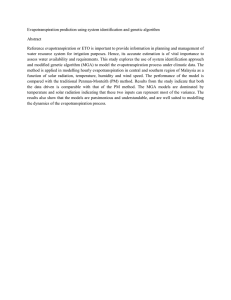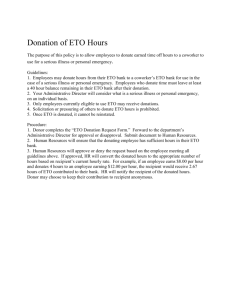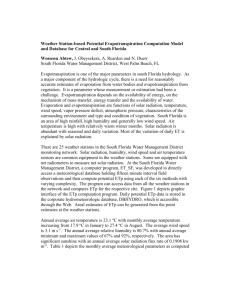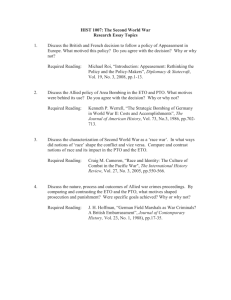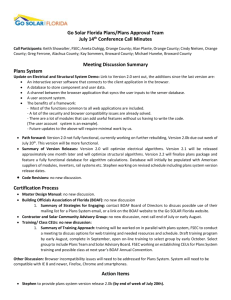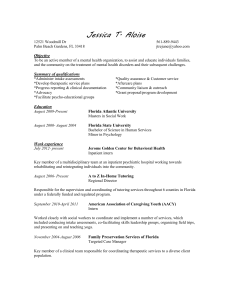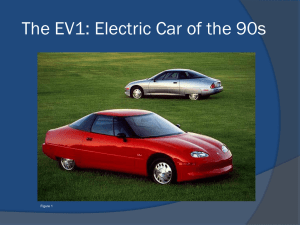Long-Term Reference Evapotranspiration and Solar Radiation
advertisement
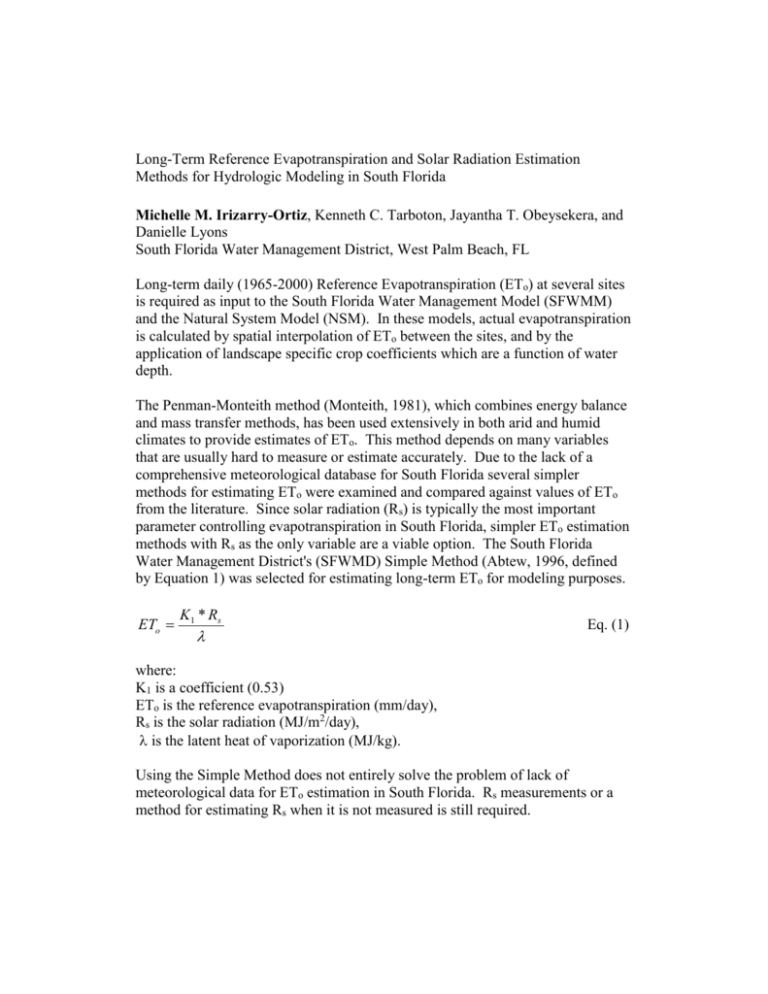
Long-Term Reference Evapotranspiration and Solar Radiation Estimation Methods for Hydrologic Modeling in South Florida Michelle M. Irizarry-Ortiz, Kenneth C. Tarboton, Jayantha T. Obeysekera, and Danielle Lyons South Florida Water Management District, West Palm Beach, FL Long-term daily (1965-2000) Reference Evapotranspiration (ETo) at several sites is required as input to the South Florida Water Management Model (SFWMM) and the Natural System Model (NSM). In these models, actual evapotranspiration is calculated by spatial interpolation of ETo between the sites, and by the application of landscape specific crop coefficients which are a function of water depth. The Penman-Monteith method (Monteith, 1981), which combines energy balance and mass transfer methods, has been used extensively in both arid and humid climates to provide estimates of ETo. This method depends on many variables that are usually hard to measure or estimate accurately. Due to the lack of a comprehensive meteorological database for South Florida several simpler methods for estimating ETo were examined and compared against values of ETo from the literature. Since solar radiation (Rs) is typically the most important parameter controlling evapotranspiration in South Florida, simpler ETo estimation methods with Rs as the only variable are a viable option. The South Florida Water Management District's (SFWMD) Simple Method (Abtew, 1996, defined by Equation 1) was selected for estimating long-term ETo for modeling purposes. ETo K1 * Rs Eq. (1) where: K1 is a coefficient (0.53) ETo is the reference evapotranspiration (mm/day), Rs is the solar radiation (MJ/m2/day), is the latent heat of vaporization (MJ/kg). Using the Simple Method does not entirely solve the problem of lack of meteorological data for ETo estimation in South Florida. Rs measurements or a method for estimating Rs when it is not measured is still required. Long-term (1965-2000) daily measurements of solar radiation in South Florida are very scarce. The only long-term dataset of measured Rs that could be found is for Miami International Airport. Additional Rs data has been collected by the SFWMD for relatively short periods of time at several stations. Several methods for estimating historical solar radiation based on widely-available maximum and minimum surface temperature measurements were examined including Allen's (1997) self-calibrating (Kr) method and modifications to the Bristow-Campbell (1984) method found in the literature. There was greater consistency in the performance of the self-calibrating method compared to other more complex methods. The self-calibrating method requires the estimation of a single parameter (Kr) and it was found that this parameter does not change significantly across South Florida. Although some of the methods examined matched the variability of the measured data better than the self-calibration method, the selfcalibration method was selected for its simplicity and small spatial variability of its parameter (Kr). Results for Miami International Airport show that the selfcalibrating method explains approximately 40 percent (R2=0.4) of the variation in solar radiation with the best performance during the dry season (R2=0.45) compared to the wet season (R2=0.22). The various ETo estimation methods examined are presented and compared to values found in literature for South Florida. Rs estimation methods and statistical measures used to select the most appropriate Rs estimation method are also presented. References: Abtew, W., 1996. Lysimeter study of evapotranspiration from a wetland. C.R. Camp, Evapotranspiration and irrigation scheduling, Proc., ASAE Int. Conf., E. J. Sadler and R.E. Yoder, eds., ASAE, St. Joseph, Mich., 54-60. Allen, R.G., 1997. Self-calibrating method for estimating solar radiation from air temperature. Journal of Hydrologic Engineering, 2(2):56-67. Bristow, K.L., and G.S. Campbell, 1984. On the relationship between incoming solar radiation and daily maximum and minimum temperature. Agricultural and Forest Meteorology, 31:159-166. Monteith, J.L., 1981. Evaporation and surface temperature. Quart. J. Roy. Meteorol. Soc., 107:1-27. Contact: Michelle, Irizarry-Ortiz, South Florida Water Management District, 3301 Gun Club Road, West Palm Beach, FL 33406, Phone: 561-682-6058, mirizar@sfwmd.gov
